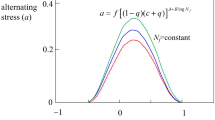Abstract
Advanced composite materials are finding ever-increasing employment in aerospace structural applications. Generally, the composites appear as the ‘skins’ (surfacing elements) on sandwich components. A typical sandwich component consists of many subelements, i.e., skins, adhesive, core, sealants, etc. The degradation mechanisms for the overall sandwich components must take into account the aerospace environment including loads, temperatures and moisture as well as fabrication- and service-induced flaws in the overall sandwich construction.
This paper describes an experimental system designed to investigate the static compressive strengths of high-strength graphite/epoxy composite sandwich structures with various defects, after exposure to combined moisture-saturation and elevated-temperature environment in the presence of fatigue stress cycling. The moisture, thermal exposure, and stress cycling were designed to simulate mission conditions. The equipment was designed to perform multiple-specimen testing of sandwich structures including various construction parameters and flaw types. Stress cycling is of the variable-amplitude type in a fully reversed mode.
Similar content being viewed by others
References
Bert, C.W. andFrancis, P.H., “Composite Material Mechanics: Structural Mechanics,”AIAA Journal,12 (9)1173–1186 (Sept. 1974).
Konishi, D.Y. and Lo, K.H., “Flaw Criticality of Graphite/Epoxy Structures,” presented at the Symposium on Nondestructive Evaluation and Flaw Criticality for Composite Materials sponsored by ASTM at Philadelphia, PA (Oct. 10–11, 1978).
Jeans, L.L., Van Siclen, R.C. and Grimes, G., “Fatigue Spectrum Sensitivity Study For Advanced Composite Materials,” AF Contract F33615-75-C-5236, (Northrup) Quarterly Progress Report 1–14 (Jan. 1976 to Dec. 1978).
Altman, J., et al., “Advanced Composites Serviceability Program,” A.F. Contract No. F33615-76-C-5344 (Rockwell International Corp./IITRI/Washington U.), Quarterly Progress Reports 1–9 (Jan. 1977 to Dec. 1978).
Whiteside, J., et al., “Environmental Sensitivity of Advanced Composites,” A.F. Contract No. F33615-76-C-5324 (Grumman Aerospace Corporation), Quarterly Progress Reports 1–9 (Dec. 1976 to Dec. 1978).
Hofer, K.E. and Waring, G., “Fatigue and Residual Strength and Flaw Growth of Graphite/Epoxy Composites Under Simulated Aerospace Environment,” Proc. Second Intl. Conf. on Composite Materials (ICCM-2), 259–276 (1978).
Parmeley, P., Konishi, D. and Hofer, K.E., “On The Accelerated Testing of Graphite/Epoxy Coupons,” Proc. Second Intl. Conf. on Composite Materials (ICCM-2) (1978).
Hofer, K.E., et al., “Development of Engineering Data on the Mechanical and Physical Properties of Advanced Composite Materials,” AFML TR 74-266 (Feb. 1975).
Hofer, K.E., Jr., et al., “Development of Engineering Data on the Mechanical and Physical Properties of Advanced Composite Materials,” AFML TR 72-205, Part I (Sept. 1, 1972) and Part II (Feb. 1974).
Rao, N. and Hofer, K.E., Jr., “Fatigue Behavior of Graphite/Glass/Epoxy Composites,” Final Report IITRI Program D6070 (Apr. 1973).
Hofer, K.E., Jr. and Bennett, L.C., “The Effects of Moisture on the Mechanical Performance of T300 Graphite/Glass/Epoxy Hybrid Composites,” Final Report on IITRI Program D6100 under Contract No. N00019-75-C-0113.
Hofer, K.E., Jr. andPorte, R., “Influence of Moisture on the Impact Behavior of Hybrid Glass/Graphite/Epoxy Composites,”J. Elastomers and Plastics,10,271 (1978).
Browning, C., “The Effects of Moisture on the Properties of High Performance Structural Resins and Composites,” AFML TR 72-94 (Sept. 1972).
McKague, E.L., Reynolds, J.D. and Halkias, J.E., “Life Assurance of Composite Structures,” AFML TR-75-51,1,“Moisture Effects,” (May 1975).
Springer, G.S. and Shen, C.H., “Moisture Absorption in Graphite Epoxy Composites,” AFML Contract F33615-75-C-5165.
Trabocco, R.E. and Pipes, R.B., “The Effect of Natural Aging and Weathering of Graphite/Epoxy Composites,” presented at the “Program Review of Navy Sponsored Work on Composite Materials,” (March 4–6, 1975).
Waring, G. and Hofer, K.E., Jr., “Investigation of Environmental Degradation of Advanced Composite Sandwich Construction,” Final Report for Contract No. N62269-76-C-0237 (March 1979).
Fischer, P. andDeLuccia, J., “Effects of Graphite/Epoxy Composite Materials on the Corrosion Behavior of Aircraft Alloys,” in “Environmental Effects on Advanced Composite Materials,” ASTM STP 602, 50–66 (June 1976).
Hofer, K.E., Jr. and Jollay, J., “Growth of Four Flaw Types In Graphite/Epoxy Composites Due to Fully Reversed Fatigue,” Proceedings of Fourth Conference on Fibrous Composite In Structural Design, San Diego, CA (Nov. 13–17, 1978).
Konishi, D.Y., “Effects of Defects on Tension Coupons Under-going an Accelerated Environmental Spectrum,” Proc. of the Fourth Conference on Fibrous Composites in Structural Design, San Diego, CA (Nov. 13–17, 1978).
Konishi, D.Y. and Johnston, W.R., “Fatigue Effects on Delaminations and Strength Degradation in Graphite/Epoxy Laminates,” Proc. of the Fifth ASTM Conference on Composite Materials: Testing and Design, New Orleans, LA (March 21–22, 1978).
Bush, H.G., “Experimental Evaluation of Two 36″×47″ Graphite/Epoxy Sandwich Shear Webs,” NASA TM X-72767 (Aug. 27, 1975).
Kulkarni, S.V., “An Engineering Approach to Static and Fatigue Behavior of Flawed Fiber-Composite Laminates,” Lawrence Livermore Laboratory, Preprint UCRL-81753 (Jan. 25, 1979).
DeLollis, N.J., “Durability of Structural Adhesive Bonds: A Review,” Adhesives Age, 41–48 (Sept. 1977).
Author information
Authors and Affiliations
Rights and permissions
About this article
Cite this article
Waring, G., Hofer, K.E., Brown, I. et al. Design and operation of multi-specimen fully reversed fatigue systems for advanced composite materials. Experimental Mechanics 20, 153–161 (1980). https://doi.org/10.1007/BF02327118
Received:
Revised:
Issue Date:
DOI: https://doi.org/10.1007/BF02327118




